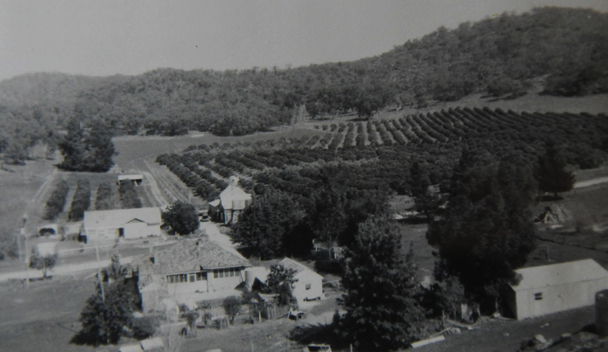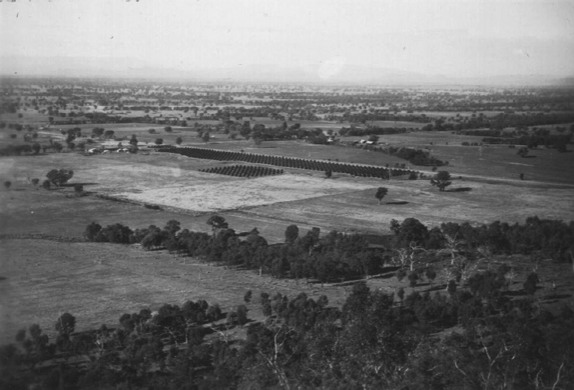South Wangaratta History Overview
Prior to European Settlement, the traditional custodians of the South Wangaratta area were the Bangerang/Pangerang People. This area provided a rich resource of permanent springs and abundant flora and fauna. The lee side of the ranges gave shelter from the cold westerly winds, especially during the colder months. Seasonally, large gatherings of clans occurred and corroborees were held near permanent springs in this area.
Following reports by Hume and Hovell in 1824 and Major Mitchell in 1836, squatters soon moved into the area, bringing sheep and cattle with them. South Wangaratta was part of William Clark's 16,000 acre "Ovens Crossing Place" run and the eastern slope of the Warby Ranges was part of Benjamin Warby's "Taminick Plains" run of 23,000 acres.
In 1858, the Geodetic Survey of Victoria commenced. Surveyors divided the colony into large squares from 640 acres to 30 acres, while the majority ranged from 100 acres to 200 acre allotments in this area. These were soon taken up, under certain conditions, by selectors who rapidly set about farming the land.
The rich, fertile soil enabled a diverse range of agriculture to flourish. In 1900 a vineyard was established and later tobacco, flax and cereal crops were grown. Dairying was carried out, while the first commercial citrus crop in Victoria was grown in the area in 1902. A wide range of other fruits including, apples, pears, peaches, plums cherries, figs, walnuts and almonds were also commercially grown. Sheep, cattle and pig production meant that the early farms produced a wide and varied range of products.
This area was a strong, active, self-reliant community. The South Wangaratta Hall hosted social events including balls, dances, school concerts, card nights and meetings of community groups. For many decades the sporting clubs, volunteer fire brigade and other such groups provided entertainment and protection for, and involvement in the local community.
Today, urban development has changed the face of the area, with many of the larger farming properties now divided into life-style blocks. Cox's Estate, Reith's Estate and Upper Wangandary are examples of this change within the South Wangaratta area.
However, from here, the views of the Ovens and King Valleys and the Alps, remain the same.
Following reports by Hume and Hovell in 1824 and Major Mitchell in 1836, squatters soon moved into the area, bringing sheep and cattle with them. South Wangaratta was part of William Clark's 16,000 acre "Ovens Crossing Place" run and the eastern slope of the Warby Ranges was part of Benjamin Warby's "Taminick Plains" run of 23,000 acres.
In 1858, the Geodetic Survey of Victoria commenced. Surveyors divided the colony into large squares from 640 acres to 30 acres, while the majority ranged from 100 acres to 200 acre allotments in this area. These were soon taken up, under certain conditions, by selectors who rapidly set about farming the land.
The rich, fertile soil enabled a diverse range of agriculture to flourish. In 1900 a vineyard was established and later tobacco, flax and cereal crops were grown. Dairying was carried out, while the first commercial citrus crop in Victoria was grown in the area in 1902. A wide range of other fruits including, apples, pears, peaches, plums cherries, figs, walnuts and almonds were also commercially grown. Sheep, cattle and pig production meant that the early farms produced a wide and varied range of products.
This area was a strong, active, self-reliant community. The South Wangaratta Hall hosted social events including balls, dances, school concerts, card nights and meetings of community groups. For many decades the sporting clubs, volunteer fire brigade and other such groups provided entertainment and protection for, and involvement in the local community.
Today, urban development has changed the face of the area, with many of the larger farming properties now divided into life-style blocks. Cox's Estate, Reith's Estate and Upper Wangandary are examples of this change within the South Wangaratta area.
However, from here, the views of the Ovens and King Valleys and the Alps, remain the same.

Glenside Citrus Grove, Kangaroo Gap, South Wangaratta 1955

Carola Citrus Grove, South Wangaratta 1940